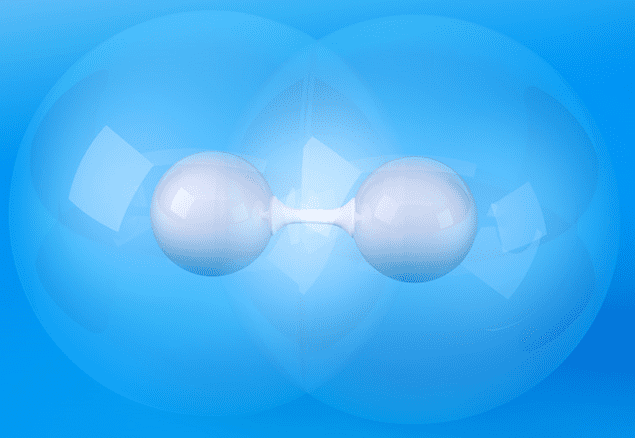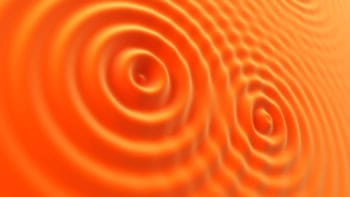
Two extremely precise measurements of the gravitational constant G have yielded significantly different values. The two experiments were done by physicists in China and the results deepen the mystery of why it has so far proven impossible to reach a consensus on the value of G, which is a fundamental physical constant.
According to Newton’s universal law of gravitation, the gravitational force (F) that attracts two objects of mass m1 and m2 separated by a distance d is given by Gm1m2/d2. The first measurement of G was made in 1798 by Henry Cavendish, who used a torsion balance designed by John Michell to measure the constant with 1% uncertainty.
A torsion balance comprises a dumbbell-shaped mass suspended from its centre by a thin wire. Two large external masses are positioned on either side of the dumbbell in such a way that their gravitational attraction can exert a torque on the dumbbell, causing it to rotate. As the wire twists, the gravitational torque is countered by torsion in the wire until the dumbbell comes to rest. By analysing this motion, G can be calculated.
Twisted results
Since then, more than 200 experiments have been done to measure G to ever higher precision. Today’s accepted value is a combination of several independent measurements and has a relative uncertainty of 47 parts per million (ppm). However, some individual experiments have much smaller uncertainties – until now, the smallest was 13.7 ppm – and some of these very precise measurements disagree by more than 500 ppm.
This has left physicists puzzled as to why it has not been possible to reach an experimental consensus on the value of G. Now, that mystery has been deepened by Shan-Qing Yang, Cheng-Gang Shao, Jun Luo and colleagues at the Huazhong University of Science and Technology and other institutes in China and Russia. They ran two different variations on the torsion balance experiment in the same lab, only to measure significantly different values of G.
One of the experiments uses the time-of-swing (TOS) technique, in which the pendulum oscillates. The frequency of oscillation is determined by the positions of the external masses and G can be deduced by comparing frequencies for two different mass configurations. The second experiment uses the angular-acceleration feedback (AAF) method, which involves rotating the external masses and the pendulum on two separate turntables. A feedback mechanism monitors the twist angle of the pendulum, which is held at zero by changing the angular speed of one of the turntables. G is then calculated from the rate of change required to zero the angle.
Agree to disagree
The Huazhong TOS and AAF measurements of G have record-breaking uncertainties of 11.64 ppm and 11.61 ppm respectively. While the TOS measurement agrees with the accepted value of G to within uncertainties, the AAF result does not. Indeed, the AAF value is about 45 ppm larger than the TOS result. Furthermore, these latest results are in disagreement with previous measurements made by the Huazhong team.

The lure of G
Despite the latest improvement in precision, the reason (or reasons) for the discrepancies between G measurements remains a mystery. The most likely explanation is that researchers have underestimated or overlooked one or more sources of experimental error. The Huazhong team suggests that anelasticity of the wire could be the culprit. This could affect the TOS experiment because it would mean that the spring constant of the wire could be different at the two different oscillation frequencies.
More tantalizing is the possibility that that some unknown aspect of physics is at play, but more measurements are needed before we can know for certain.
The experiments are described in Nature.



